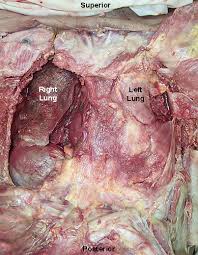
Staging is the process of finding out how far the cancer has spread. This is very important because your treatment and the outlook for your recovery depend on the stage of your cancer. There are different staging systems for small cell and non-small cell lung cancer.
The AJCC Staging System
A more formal system to describe the growth and spread of lung cancer is the American Joint Committee on Cancer (AJCC) TNM staging system. Stages are described using Roman numerals from 0 to IV (0 to 4). Some stages are further divided into A and B. In general, the lower the number, the less the cancer has spread. A higher number, such as stage IV (4), means a more serious cancer.
This system is used more often for non-small cell lung cancer. It is used less often for small cell lung cancer, mainly because treatment options and outlook don't vary much between these detailed stages.
After looking at your test results, the doctor will tell you the stage of your lung cancer. Be sure to ask your doctor to explain your stage in a way you understand. This will help you both decide on the best treatment for you.
The Two-Stage System for Small Cell Lung Cancer
For small cell lung cancer, a two-stage system is most often used. This system divides cancers into limited stage and extensive stage.
Limited stage usually means that the cancer is only in one lung and perhaps in lymph nodes on the same side of the chest.
If the cancer has spread to the other lung, to lymph nodes on the other side of the chest, or to distant organs, it is called extensive. Many doctors also call cancer that has spread to the fluid around the lung extensive stage.
Small cell lung cancer is staged in this way because it helps to separate people who can be treated with radiation therapy and chemotherapy to try to cure the cancer (limited stage) from those who are very unlikely to be cured (extensive stage).
Lung Cancer Survival Rates by Stage
The numbers below are relative survival rates from the National Cancer Institute's Surveillance, Epidemiology, and End Results (SEER) database, based on people with lung cancer between 1988 and 2001. Improvements in treatment since then mean that the survival rates for people with these cancers may now be higher.
The five-year survival rate refers to the percentage of patients who live at least five years after their cancer is found. Of course, some patients live much longer than five years. Five-year relative survival rates means that people who die of other causes are not included, and the rate only includes people who die from lung cancer.
While these numbers provide an overall picture, keep in mind that every person's situation is unique and the statistics can't predict exactly what will happen in your case. Talk with your cancer care team if you have questions about your own chances of a cure, or how long you might survive your cancer. They know your situation best.
Small-cell lung cancer 5-year survival rate
Stage I – 31%
Stage II – 19%
Stage III – 8%
Stage IV – 2%
Non-small cell lung cancer 5-year survival rate
Stage I – 56%
Stage II – 34%
Stage III – 10%
Stage IV – 2%



0 nhận xét:
Speak up your mind
Tell us what you're thinking... !